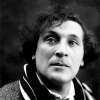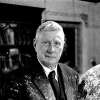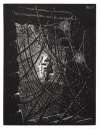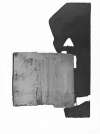Impressionist
& Modern
Discover art for sale. Buy and sell Impressionist & Modern prints & editions online. Beginning in the late 19th century, Impressionist and Modern Art changed the face of artistic practice throughout the 20th century.
Art for sale
Movement Overview
Impressionist and Modern art spanned less than 100 years but paved the way for later artists. From the mid-19th century, Impressionism rebelled against academic and figurative art to experiment with new uses of colour, painting techniques and subjects, such as everyday life and urban scenes. Modern art continued this exploration until the mid-20th century with dynamic movements such as Fauvism, Futurism, Cubism and Surrealism. Their subjects, materials and styles were reflective of their times, yet also timelessly relevant – works by artists like Pablo Picasso and Henri Matisse continue to inspire today.
Modern Art has its origins in the French Impressionist movement of the late 19th-century. In April of 1874, a group of artists defied the traditional approaches of the Paris Salon – an annual art event organised by the city’s Académie des Beaux-Arts – by setting up their own independent exhibition. This group of artists, which included the likes of Auguste Renoir, Claude Monet, Camille Pissarro, Edgar Degas, and Berthe Morisot, exhibited 165 of their unorthodox works, attracting mockery from visitors and some very hostile reviews from critics. However, little did those who visited the exhibition know that these works would revolutionise Western art forever.
Using a variety of intense colours and gestural, rapidly applied brush strokes, the Impressionists – as they went on to be named – abandoned artistic norms, such as linear perspective, in order to capture fleeting impressions of their surroundings. In the Western canon, the arrival of Impressionism in late 19th-century France is widely hailed as a turning point in contemporary Art history: the birth of the first ‘modern’ art form.
As an artistic category and genre, Impressionist & Modern Art is expansive. Since 1874, when a group of artistic renegades assembled their work for the first exhibition of Impressionist art – held at the Paris studio of French photographer and caricaturist, Nadar – the Western art world underwent a decisive shift. No longer content with the depiction of subjects according to their physical appearance, a longstanding academic tradition which utilised painting as a medium for the subjective rendering of an objective and unchanging reality, artists opted increasingly to interest themselves in the depiction of more elusive subjects, such as light, movement and emotion.
This shift gave birth to an enormous variety of individual sub-movements, active up until the mid-20th-century. From Fauvism and Futurism to Cubism, Surrealism and Constructivism, each sub-movement of Modern Art has seen artists engage with markedly different artistic processes, a whole host of different media, and a variety of subjects. Some modern artists found themselves at the forefront of several different artistic movements throughout their career. Producing over 20,000 artworks, Picasso, for example, experimented with Cubism, Neoclassicism, Surrealism, and Expressionism.
Some of the most famous Impressionist & Modern artists include Marc Chagall, Salvador Dali, Henri Matisse, Joan Miró and Pablo Picasso.
Born in modern-day Belarus, pioneer of Modernism Marc Chagall managed to combine the styles and subjects of several different artistic movements within his work, namely Cubism, Symbolism and Fauvism. Distrustful of the concept of art movements, however, Chagall never expressly aligned himself with any of these. Remaining a formative influence on the Surrealist movement, of which Salvador Dali was a major proponent, Chagall’s work was chiefly preoccupied with the depiction of love – an immaterial subject. Commenting on the importance of love to his work, Chagall once said, ‘In life, just as on the artist’s palette, there is but one single colour that gives meaning to life and art, the colour of love.’
Modern artists achieved international recognition during the contemporary era. Pablo Picasso, one of the foremost Modernists, has often been dubbed the greatest artist of the twentieth century, whilst one of his contemporaries - Salvador Dali - is widely hailed as the first Modern artist to achieve international celebrity.
Perhaps the most important feature of Impressionist and Modern art is its outright denial of conventionality. As such, it is difficult to limit the genre to any one style, technique or medium. Motivated by a desire to disturb representational norms through unorthodox artistic practice, Modern art is well-known for its deconstructive approach to perspective, colour and likeness. Beyond painting, Modernism encapsulates the use of collage and sculpture, as well as etching and costume design and countless other artistic media and practices.
Rejecting history and conservative values, abstraction is a foremost feature of Modernism and Modern Art. Taking a subject and gradually removing its superfluous elements, Picasso, for example, made works designed to act as signs of an ‘enormous struggle towards the immaterial’, as Russian artist Wassily Kandinsky once put it.
The Impressionist movement enjoys a lasting legacy as the originator of what has become known as ‘Modern’ art. Learning valuable lessons from its deconstructive in its approach, Post-war & Contemporary artists such as David Hockney, Lucian Freud and Francis Bacon can all credit other Modern Art forms, such as Surrealism and Cubism, as major sources of inspiration for their work.
Whilst Impressionist & Modern Artists such as Salvador Dali and Pablo Picasso are no longer alive, their cultural and stylistic echoes are still felt today. Hockney’s work, in particular, owes considerable debt to Picasso and the Cubist movement – a fact acknowledged by the artist himself in the visual tributes, The Student (1973) and Artist And Model (1974). His Photo Collages, for example, break down traditional linear perspective, recalling the works of Marc Chagall.
Even long after his death in 1973 at the age of 91, the work of Pablo Picasso remains some of the most highly sought-after in the art market. Between April and July 2021, for example, Picasso achieved the highest market share across modern and contemporary categories at a number of auctions in New York, London, and Paris. This particularly strong performance at auction amounted to a total turnover of around $187 million. The previous year, Picasso’s auction performance saw him reach the Number 1 sales position internationally, whilst in 2018, more than more than $744 million in Picasso’s art changed hands on the public art market.
The artist’s individual pieces are some of the most expensive out there. On the 7th of May 2021, Femme assise près d’une fenêtre (Marie-Thérèse) fetched $55 million. In May of 2015, Picasso’s record was set when the internationally famous painting Femmes d’Alger was sold for an incredible $179.4 million.
We connect buyers and sellers of original contemporary and modern prints, facilitating discreet, independent, investment led private sales. Fixed, clear and mutually agreed upon between both parties - simple, safe and secure.
MyArtBroker, 55-56 Russell Square, London WC1B 4HP (by appointment only)
875 Washington St, New York, NY 10014, United States (by appointment only)
- © 2025 MyArtBroker. All rights reserved.
- Privacy Policy
- Cookie policy
- Website terms of use
- Terms and conditions






